Sotanghon at Upo Soup is a healthy, delicious, and hearty comfort food to keep you warm and toasty on rainy days! It's easy to prepare, economical, and can be enjoyed on its own or as a main dish with hot steamed rice.
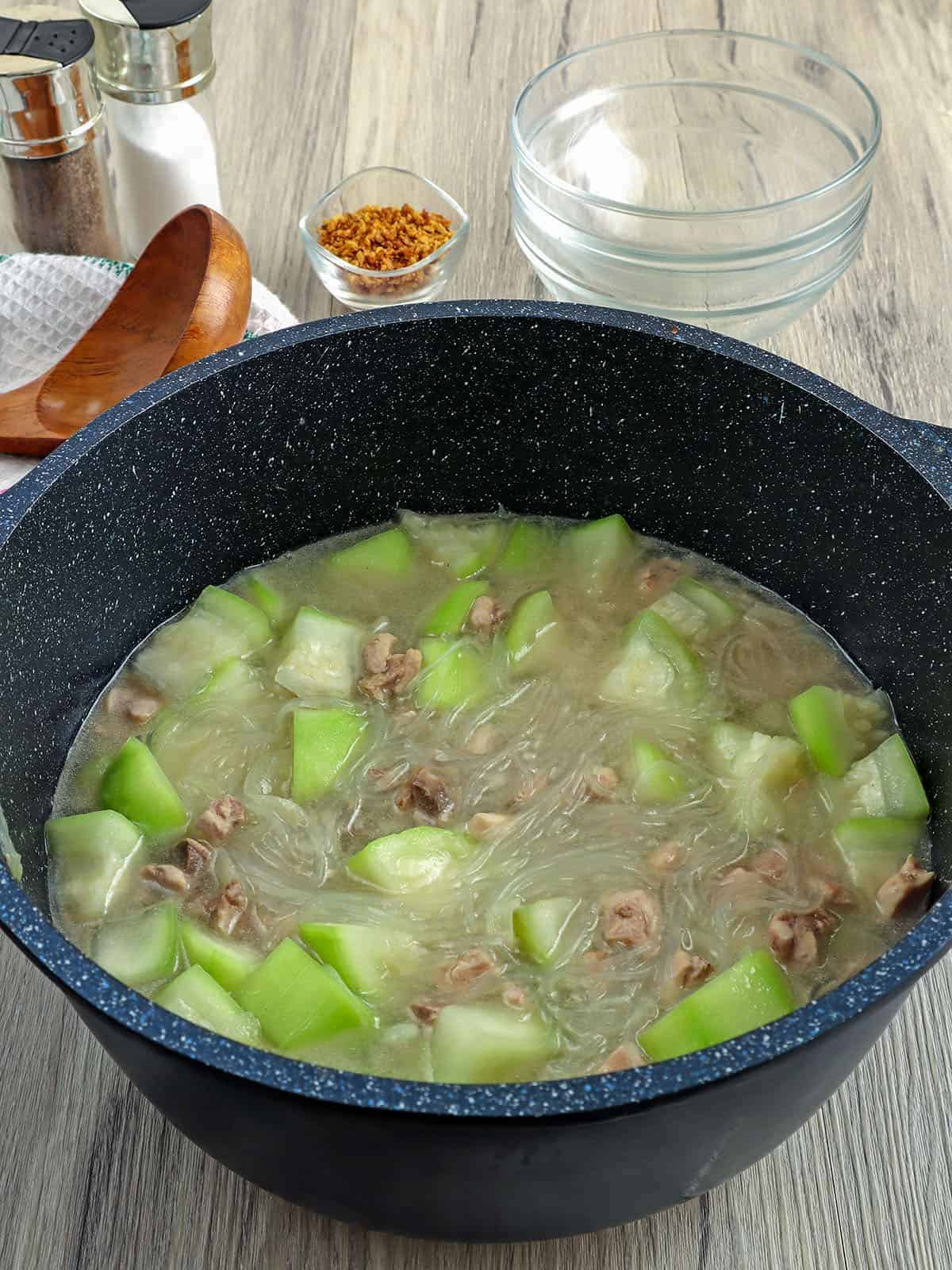
Sotanghon soup with upo is one of my favorite ways to keep warm on cold winter or gloomy rainy days. It is hearty and comforting, easy to prepare, and quick to cook. I can be out of the kitchen cozying up to a piping hot bowl in no time!
Plus, it's budget-friendly and versatile, as you can easily switch up the protein with whatever you have. I've tried ground pork, minced shrimp, or beef meatballs with equally delicious results.
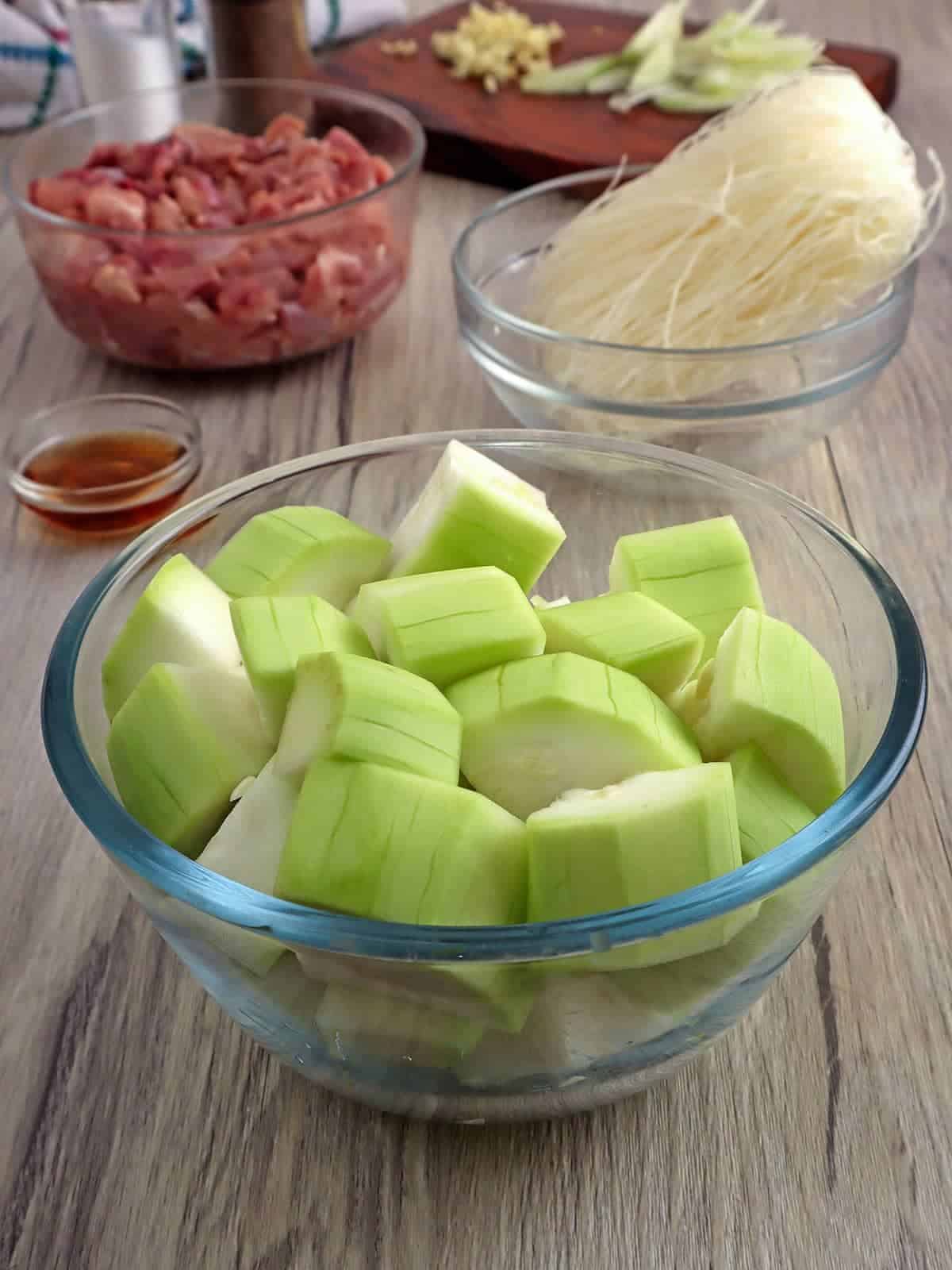
Ingredients
- Upo-from the calabash family, it's called bottle gourd in English owing to its elongated shape. It has delicate flesh that only needs a few minutes to cook.
- Sotanghon- cellophane, glass, or mung bean thread noodles, is a type of clear noodles made from potato, mung bean, sweet potato, or tapioca starch and water. They're usually packaged in dried form and then softened in hot liquid to use in stir-fries and soups.
- Boneless chicken thighs- are easier to cook and do not dry out as quickly as breasts. Chicken thighs are more tender and flavorful, while chicken breasts are leaner and have lower fat content.
- Fish sauce- adds umami flavor. Replace with salt to taste, if desired.
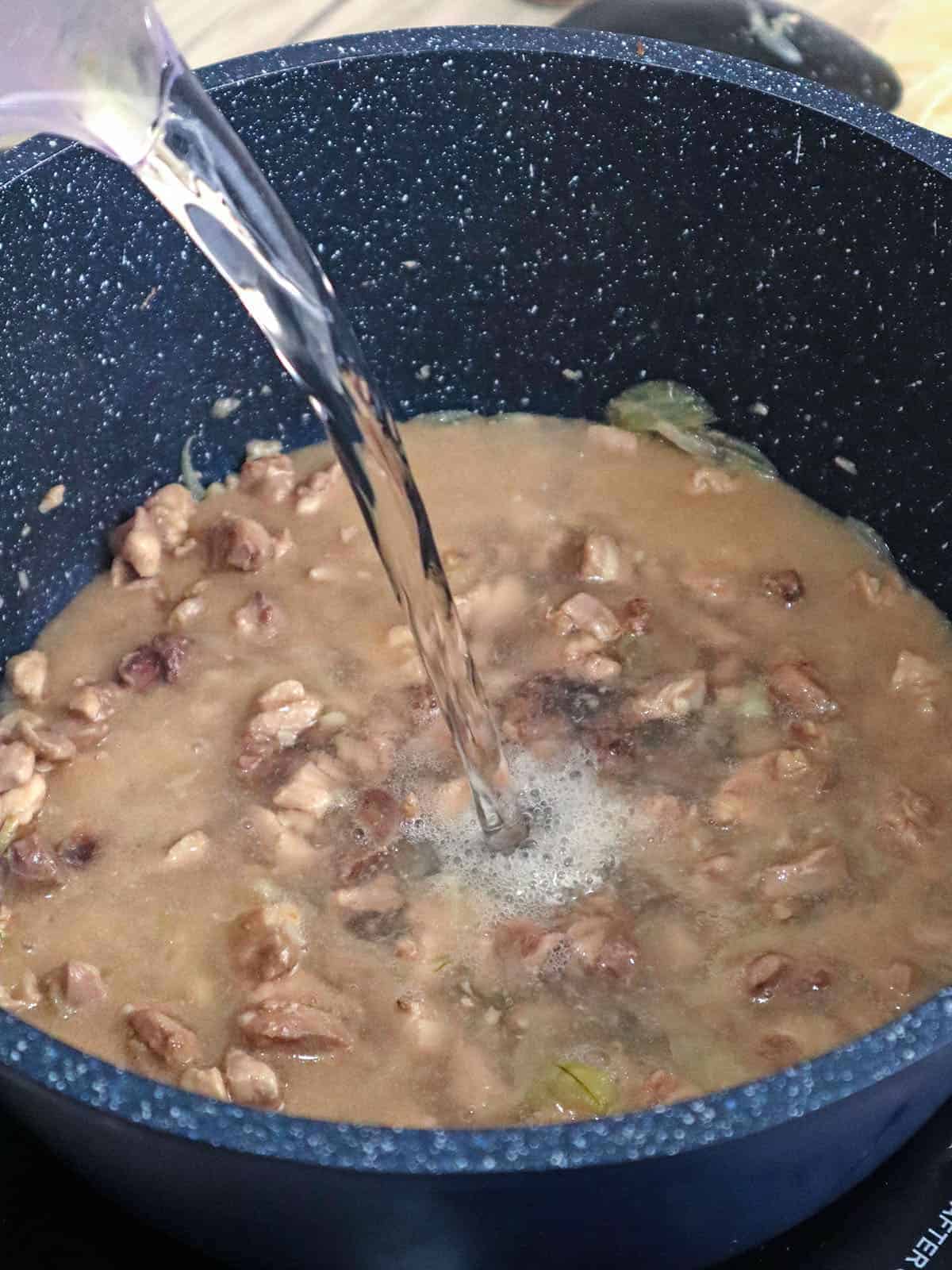
How to prepare upo
Upo is easy to prepare and cooks quickly. And it's relatively inexpensive and low-calorie to boot!
- Wash under cold running water and cut off the stem with a knife.
- Peel the skin with a vegetable peeler by running down the gourd lengthwise. With a knife, cut the peeled upo lengthwise.
- If the interior is "too spongy" and has large, hardened seeds, remove the spongy flesh using a spoon and discard.
- Slice into 1-inch cubes. Use in the recipe as directed.
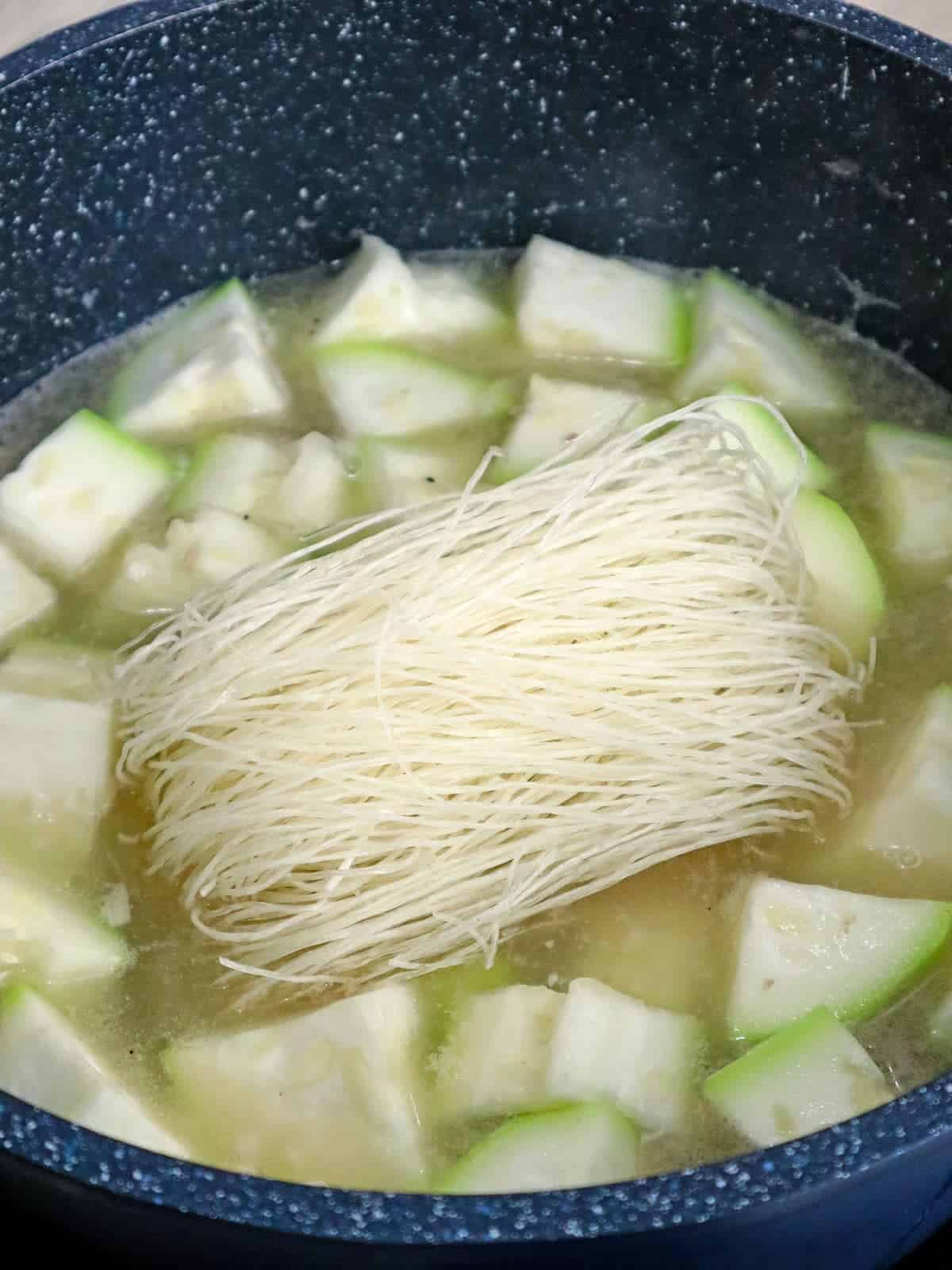
Cooking tips
- Choose young bottle gourd or calabash. As the vegetable matures, the edible seeds lose some of their tenderness and the center flesh becomes too spongy and too mushy when cooked.
- Cut the gourd into uniform size to ensure even cooking. For best texture, do not cover during cooking as the upo will expel a lot of liquid. Take off from the heat while still tender-crisp as it will continue to cook in the residual heat.
- There's no need the sotanghon as they cook rather quickly. Just add the dry coils and push them down in the hot broth to soften.
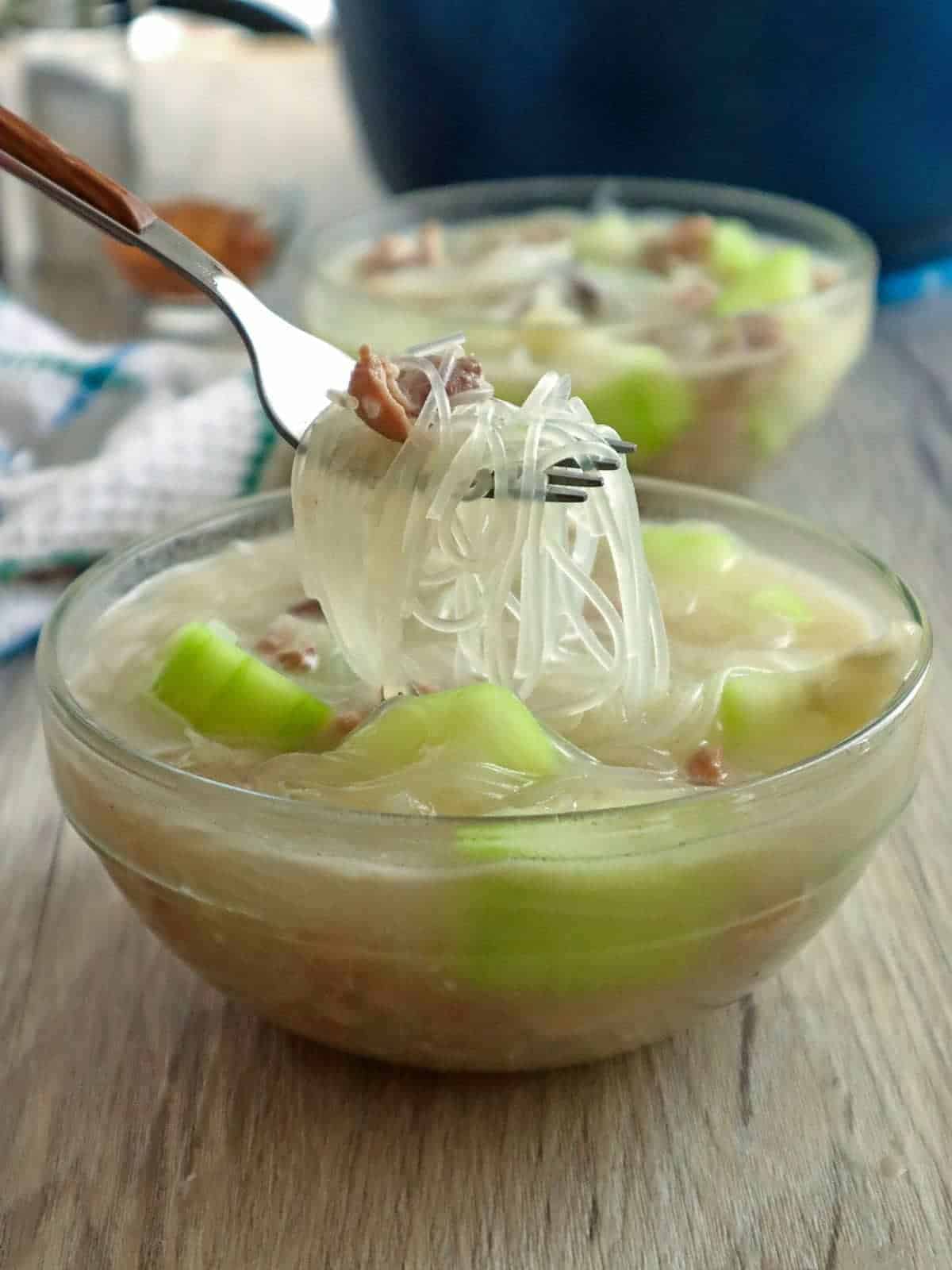
How to serve
- This sotanghon at upo is delicious on its own or as a main dish for lunch or dinner with steamed rice and your favorite meat or fish.
- I enjoy a piping hot bowl topped with fried garlic bits, but you can also use garnish with chopped green onions, crispy fried shallots, or even add a hard-boiled egg.
How to store leftovers
- Due to the nature of the ingredients, this soup does not store or freeze well. It's best freshly cooked as the sotanghon tends to soak much of the broth, and the upo gets mushy over time.
- If you have leftovers, transfer to a container with a lid and refrigerate for up to 3 days.
- Add more water and adjust the taste with fish sauce or salt when reheating.
Ingredients
- 1 medium upo
- 1 tablespoon canola oil
- 1 small onion, peeled and sliced thinly
- 2 cloves garlic, peeled and minced
- ½ pound boneless chicken thigh meat, diced
- 1 tablespoon fish sauce
- 4 cups water
- salt and pepper to taste
- 2 ounces sotanghon (cellophane noodles)
- fried garlic bits, optional
Instructions
- Cut and discard ends of upo. Using a peeler or a paring knife, peel skin. Cut the gourd lengthwise. If interior is "too spongy" and has mature seeds, remove spongy flesh using a spoon and discard. Slice gourd into 1 inch cubes.
- In a pot over medium heat, heat oil. Add onions and garlic and cook until softened.
- Add chicken and cook, stirring occasionally, until lightly browned and juices run clear.
- Add fish sauce and cook for about 1 minute.
- Add water and bring to a boil. Season with salt and pepper to taste.
- Add upo and cook for about 2 to 3 minutes or until half-done.
- Add sotanghon and push down into the broth.
- Continue to cook for about 3 to 5 minutes or until noodles are translucent and upo is tender yet crisp.
- Ladle into serving bowls and garnish with fried garlic bits, if desired. Serve hot.
Notes
- Cut the gourd into uniform size to ensure even cooking. For best texture, do not cover during cooking as the upo will expel a lot of liquid. Take off from the heat while still tender-crisp as it will continue to cook in the residual heat.
- There's no need the sotanghon as they cook rather quickly. Just add the dry coils and push them down in the hot broth to soften.
Video

Nutrition Information
“This website provides approximate nutrition information for convenience and as a courtesy only. Nutrition data is gathered primarily from the USDA Food Composition Database, whenever available, or otherwise other online calculators.”

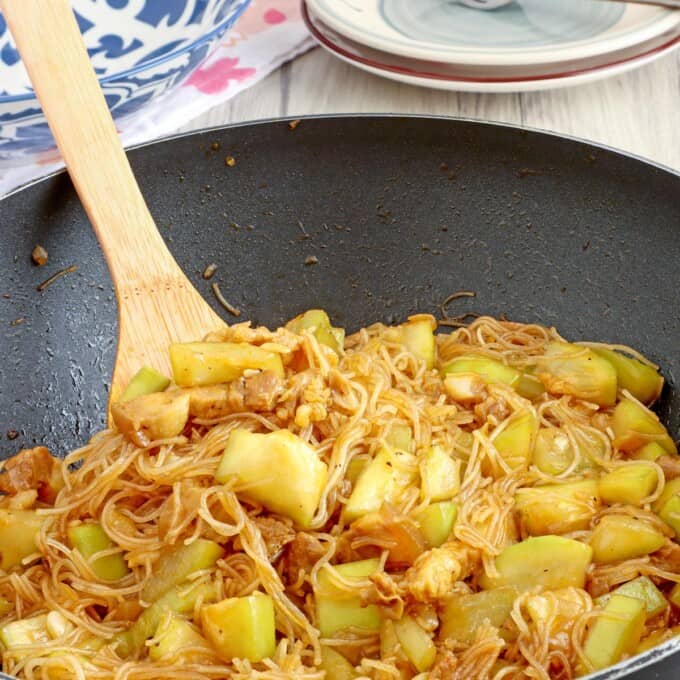
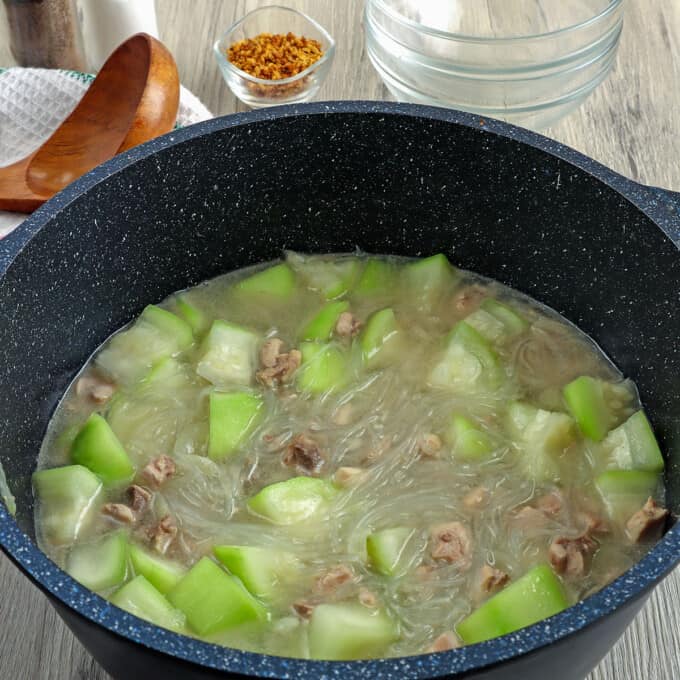
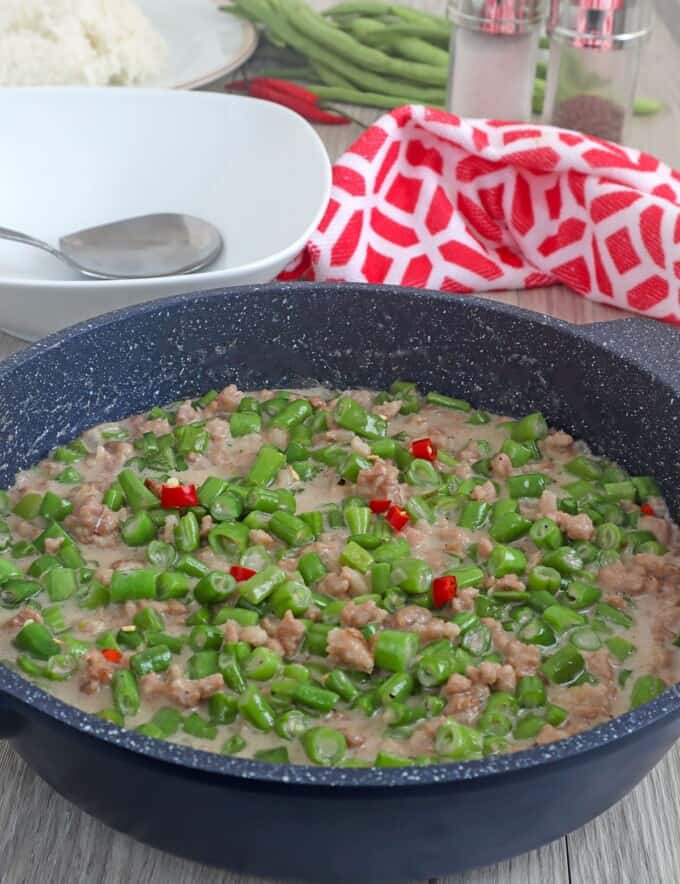
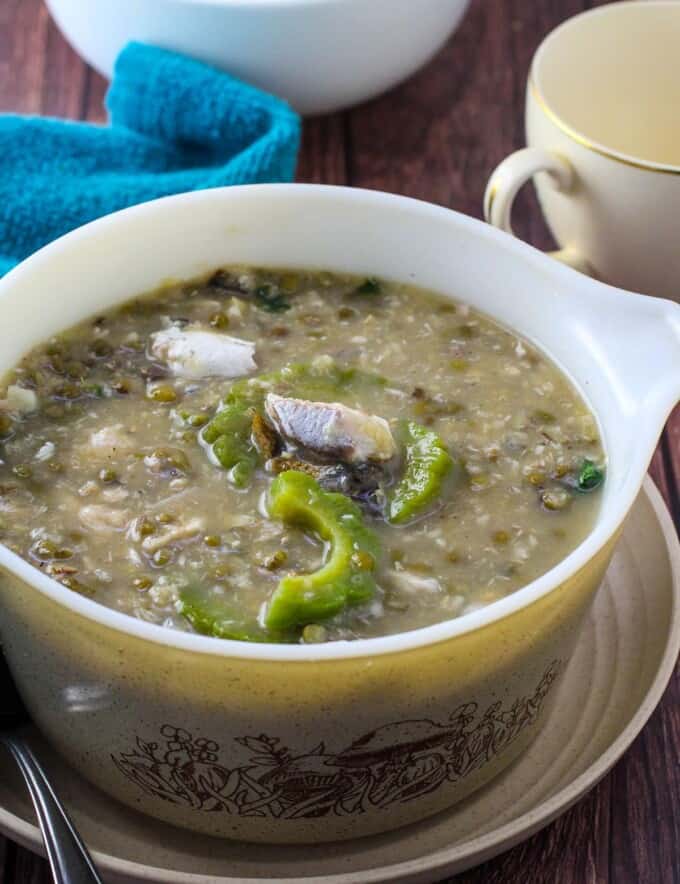
Rod Bernil says
Love this Filipino website.
Lalaine Manalo says
Thank you so much!
Jacq says
Hi, what do you partner this dish with?
Erica Rualo says
Yummy and easy. Added a bit of white pepper for more flavor.
Marites says
Healthy & nutritious 😋👍🙏😇
Lalaine Manalo says
Yes, it is 🙂
Ruby says
Hi! I made this last night and it turned out tasteful. However the noodles seemed to absorb all the soup. Is there a technique to saving the soup once done cooking? Thanks!
Lalaine says
You can maybe serve it like they do pho. Just quickly blanch the noodles in the broth and keep separate until serving time. Add the broth/soup in when ready to eat 🙂
Ruby Gaviola says
Awesome, thank you!
jeffrey says
its easy, put a lots of water to have your soup.